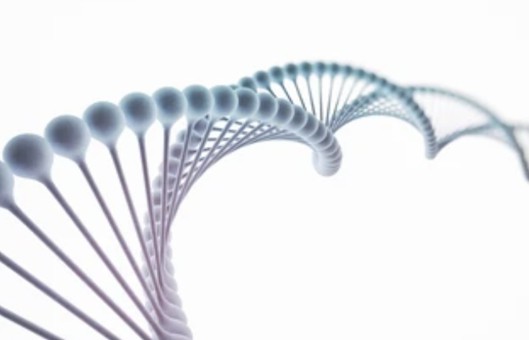Protocol for DNA Enzyme Digestion and Identification
GUIDELINE
Restriction enzymes are primarily found in prokaryotic cells, with most originating from bacteria, some from cyanobacteria and Streptomyces, and very few from microorganisms such as mycoplasma. These enzymes can cut foreign DNA at specific recognition sites, such as infected phages, in prokaryotic cells. The host cell's DNA is often protected by methylation of one of its specific recognition sites, rendering it no longer a substrate for restriction enzymes. A restriction recognition sequence is a DNA sequence that a restriction endonuclease can specifically bind to. These sequences are generally 4-6 nucleotides in length and are double symmetric, also known as palindromic sequences.
METHODS
- Number clean, dry, and sterilized Eppendorf tubes. Add 1 μg of DNA and 2 μl of the corresponding restriction enzyme reaction 10 × buffer with a micropipette gun, and then add the re-steam water to make the total volume 19 μl. Mix the solution in the tube and add 1 μl of the enzyme solution with a finger to mix the solution, or use a microcentrifuge to shake it so that the solution is concentrated at the bottom of the tube.
- After mixing the reaction system, the Eppendorf tube was placed on the appropriate support and kept in a 37°C water bath for 2-3 hours to complete the enzyme digestion reaction.
- Add 2 μl 0.1 mol/L EDTA (PH 8.0) to each tube, mix well to stop the reaction (can be done or not), and store in the refrigerator for later use.
- DNA samples over 2 μl were obtained by electrophoresis on 1% Agarose glue to determine the molecular size of DNA.
Creative Bioarray Relevant Recommendations
- Creative Bioarray provides high-quality DNA samples from various tissue specimens which are suitable for genotyping, loss of heterozygosity, mutation analysis, and other applications.
- We provide an extensive range of high-quality RNA samples which are ideal for Northern blotting, ribonuclease protection assay, SI nuclease assay, RT-PCR/Q-PCR analysis, rapid amplification of cDNA ends (RACE), and purification of mRNA for library construction.
- We also offer a diverse range of high-quality cDNA products tailored to meet the needs of researchers and biotech professionals.
| Cat. No. | Product Name |
| CSC-CD-AC | Skin Fibroblast cDNA (Astrocytoma) |
| CSC-CD-ALS01 | Bone Marrow Stromal Cell cDNA (ALS) |
| CSC-CD-ALS02 | Skin Fibroblast cDNA (ALS) |
| CSC-CD-ALS03 | Bone Marrow Stromal Cell cDNA (ALS) |
| CSC-CD-AVM | Skin Fibroblast cDNA (AVM) |
| CSC-CD-DMD01 | Bone Marrow Stromal Cell cDNA (DMD) |
| CSC-CD-DMD02 | Skin Fibroblast cDNA (DMD) |
| CSC-CD-DMD03 | Skeletal Muscle Progenitor Cell cDNA (DMD) |
| CSC-CD-DMD04 | Skeletal Muscle Cell cDNA (DMD) |
| CSC-CD-DT1 | Skin Fibroblast cDNA (Diabetes Type I) |
| CSC-CD-DT2 | Bone Marrow Stromal Cell cDNA (Diabetes Type II) |
View the details of our cDNA products and find what you need!
NOTES
- The volume of DNA solution added during enzyme digestion should not be too large, otherwise, other components in the DNA solution will interfere with the enzyme reaction.
- Enzyme activity is usually expressed in enzyme unit (U), the definition of enzyme unit is: under the optimal reaction conditions, the amount of enzyme that completely degrades 1 mg DNA in 1 hour is a unit, but many experimentally prepared DNA is not as easy to degrade as DNA, and the amount of enzyme needs to be appropriately increased. It is not appropriate to add excessive enzymes to the reaction solution because, in addition to cost considerations, trace impurities in the enzyme solution may interfere with the subsequent reaction.
- The general concentration of enzymes sold on the market is very large, and for the sake of saving, the enzyme reaction buffer (1 ×) can be diluted in advance when used. In addition, the enzyme is usually stored in 50% glycerin, and the glycerin concentration in the reaction solution should be controlled below 1/10 in the experiment, otherwise, the enzyme activity will be affected.
- Ultraviolet transmissometers are necessary to observe DNA, but ultraviolet light has a cutting effect on DNA molecules. When recovering DNA from glue, the light time should be minimized and long wavelength ultraviolet lamps (300-360 nm) should be used to reduce ultraviolet light cutting DNA.
- EB is a strong mutagen with moderate toxicity. Gloves should be worn when preparing and using EB, and EB should not be spilled on the table or floor. Containers or articles contaminated with EB must be specially disposed of before they can be cleaned or discarded.

